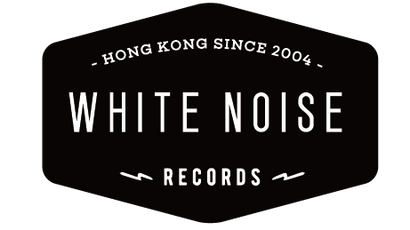Originally released in tiny numbers in 1975 on the Promusica label, ‘Pelo de Rata’ was the debut outing for a considerable talent in South American jazz, Matias Pizarro. A pianist and composer of some skill and flair, his output sadly falls far short for someone who exhibits such a natural ability to conjure up such an idiosyncratic style of jazz, replete with thoughtful yet simple melodies and driving rhythms.
Born in Chile in 1949, Piazarro became one of the leaders of the new school in Chilean jazz of the late 1960s and, like jazz musicians all over the world at the time, he was influenced by the electric sounds of Miles Davis and the group of musicians who coalesced around the Dark Prince. Pizarro also drew on local rhythms and textures and teamed up with fellow South American jazz heads to form a group called Fusion. It featured David Estánovich (tenor sax), Lautaro Rosas (guitar), Enrique Luna (bass), Mario Lecaros (electric piano), and Orlando Avendaño (drums). They were one of the watershed bands in South American jazz and released an album called ‘Top Soul’ that is highly collectible. It is considered a crucial artifact in the maturation of jazz from the Americas during a particularly troublesome time.
Sadly, like much of Latin and South America, Chile fell victim to military dictatorship in the1970s, after the CIA backed overthrow of President Salvador Allende by the military junta headed by General Augusto Pinochet (he would rule until 1993). Artistic expression during this time was fraught with difficulty, with many writers, artists and musicians imprisoned or murdered by the military powers. Dictatorships and jazz tend not to mix.
To escape the oppressive atmosphere, Pizarro went to Argentina, joining the many exiled Chileans fleeing the violence of Pinochet’s regime. It was in this febrile context that Pizarro crafted ‘Pelo de Rata’, his one and only solo album. Stylistically, it references the classic era US jazz fusion of Return to Forever and Miles as well as other Latin/South American fellow travellers such as Azymuth; but for all of that, it’s still very much Pizarro’s album. His facility on the keys is fluid and relaxed, yet razor sharp with the right attack to drive the music home.
The furious opening title track sets the stage for the album: jazz of the highest calibre textured with Pizarro’s electric piano and a pulsing rhythm section that demands the physical response. In less than a minute, ‘Anamlor’ is a solo piano piece demonstrating Pizarro’s sophisticated ear for melody and rhythm. It’s a wonderful bridge to the next track, ‘Pero Que Ladra no Muerdre’, which soars away as Pizarro’s piano paints vivid colours. Each flourish is seasoned with suggestions of Andean musical styles. Indeed, the strength of the album lies in the range of music performed and the lovely sparse ballad of ‘Una Flor Tras la Montana’ exemplifies Pizarro’s intimate characteristics, almost child-like in its simple beauty. ‘Secuencia’ flows like a clear stream, the swirls and currents of Pizarro’s lines bouncing off the rhythm section, suggesting at free playing but keeping enough melody to maintain an anchor for the listener to follow a steady path. Head-nodding, deep grooves are provided by ‘Nordeste’. The insistent bass line pulses along as sax adds colourful tones and percussion percolates away underneath. Then a gear change: stabs and washes of electric piano over angular bass and fizzing cymbals. This is hard, driving fusion at its best. The album finishes with ‘Do y Sol’, an intoxicating number that transports the listener to the balmy, exotic climes of South America. It’s an invitation hard to ignore. Come join the party.

![Minuano - Love Logic [PRE-ORDER, Colored Vinyl Release Date: 1-OCT-2025]](http://whitenoiserecords.org/cdn/shop/products/Minuano-LoveLogic2_{width}x.jpg?v=1641548842)


















![Glass Beams - Mahal [PRE-ORDER, Vinyl Release Date: 17-May-2024]](http://whitenoiserecords.org/cdn/shop/files/glass-beams-mahal-pre-order-vinyl-release-date-17-may-2024_{width}x.webp?v=1709096397)
![Glass Beams - Mahal [PRE-ORDER, Vinyl Release Date: 17-May-2024]](http://whitenoiserecords.org/cdn/shop/files/img99674_glass-beams-mahal-pre-order-vinyl-release-date-17-may-2024_{width}x.webp?v=1709096400)
![Minuano - Spring Lovers [PRE-ORDER, Vinyl Release Date: Mid March-2025]](http://whitenoiserecords.org/cdn/shop/files/minuano-spring-lovers-pre-order-vinyl-release-date-mid-march-2025_{width}x.jpg?v=1731929259)
![Minuano - Spring Lovers [PRE-ORDER, Vinyl Release Date: Mid March-2025]](http://whitenoiserecords.org/cdn/shop/files/img76042_minuano-spring-lovers-pre-order-vinyl-release-date-mid-march-2025_{width}x.jpg?v=1731929263)












![Fishmans - Uchu The Best of Fishmans [PRE-ORDER, Vinyl Release Date: 24-July-2024]](http://whitenoiserecords.org/cdn/shop/files/fishmans-uchu-the-best-of-fishmans-pre-order-vinyl-release-date-24-july-2024_{width}x.jpg?v=1707451813)




![前田美波里 Bibari Maeda - First [PRE-ORDER, Vinyl Release Date: 3-Dec-2022]](http://whitenoiserecords.org/cdn/shop/products/E5_89_8D_E7_94_B0_E7_BE_8E_E6_B3_A2_E9_87_8C-bibari-maeda-first-pre-order-vinyl-release-date-3-dec-2022_{width}x.jpg?v=1661665941)

















































